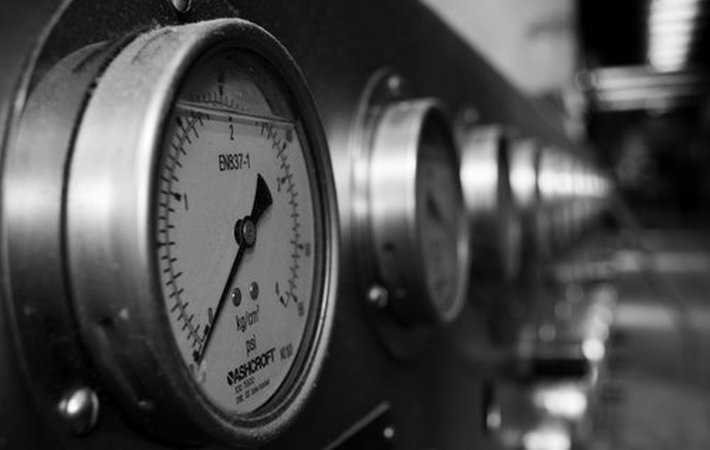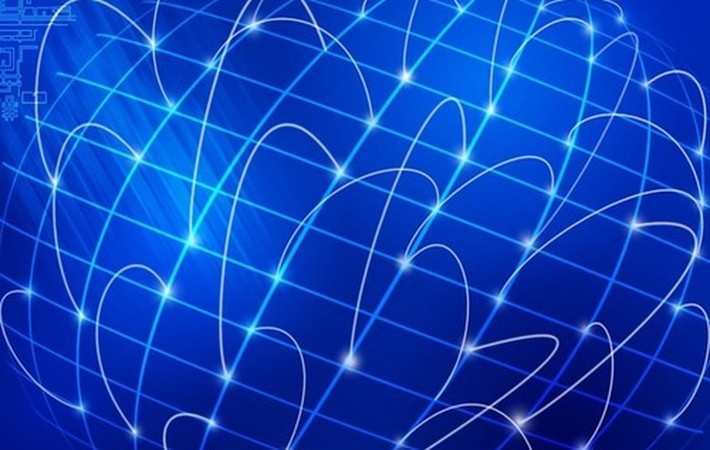
Published on 12/19/2016 | Strategy
Big Data / IoT in general refers to a new approach to technology where data is used to create an intelligent digital ecosystem that cuts across the horizontal & vertical compartments of a business organization. It enables through & through business visibility, autonomous actions, risk and exceptions notification within the opportunity window, augmented decision support, and remote operations. The set of evolving technologies enabling this data-ecosystem can generally be broken down into the following groups:
Sensing has been revolutionized by the availability of low power, low cost and non-intrusive sensing technologies. Today’s sensors can just stick onto a machine or pipeline surface and work for years (5 – 10 years) without needing an external power supply connection. This has also allowed sensors that are completely sealed (IP67/68) and can operate easily in hazardous (zone 1, or even zone 0) locations.

Networking, especially wireless mesh networking (WMN), has allowed sensors to be deployed anywhere in the plant or on the field without cabled LAN for connectivity. These sensors can pass the baton from one to another till it reaches a data gateway bringing the data to its intended destination. The impact of this is huge – in earlier days, a U$1000 worth of sensors needed about U$ 10,000 worth of paraphernalia such as junction boxes, cables, marshalling panels, I/O channels, PLC/DCS etc. to get the data to its destination. Today, unless a sensor is used for real-time control purposes that needs low jitter, one can do away with the above mentioned paraphernalia. This allows wide deployment of sensors for monitoring and decision support purposes across plants and machines. IPv6 allows almost all the molecules on this planet to get connected to the Internet without running out of IP addresses. Thus it is possible today to sense every nook and corner of a plant without draining the bottom line. Technologies such as IO Link, OPC UA, etc. are also allowing an unprecedented amount of visibility into the sensors, and smooth, standardized bi-directional communication from enterprise level systems down to embedded systems.
With the advent of substantial computing power within a small form factor, physical systems such as sensors, rotating machines, etc. can now have intelligence, processing power, communication capability and an IP address. They can now have a cyber presence and can be connected to the Internet. These are now called “Cyber Physical Systems (CPS)”. Every physical object in a manufacturing plant, such as processing units, complete manufacturing trains or even the plant itself, is becoming
“readable” (measurement values, status, serial no, make, guarantee information, etc.),
“observable” (digital twins that mimic the plans, targets, set-points and actual operating status and be observed remotely),
“parameterize-able” (change limits, measurement units, etc. remotely),
“analyzable” (understand and predict performance through known models or through algorithmically learned models),
and “operable” (like you operate drones).
A complete plant or any sub-component of the same can now be operated remotely through a cyber connection, and be continuously monitored, analyzed and optimized. This, the combination of CPS and IIoT, will change all known business models in the industry as it changed when people switched from having cows to buying milk from dairy farms. It is interesting to note that there also exists a “smart grid” model in Indian villages where large dairy farms supplement their inventory by buying from thousands of small producers – the business model change happened after basic road infrastructures were made available.
The infrastructural changes triggered by IIoT and CPS are much larger in nature and the impact will be far beyond our imagination and current estimates. This is already impacting the way we do business, changing business models by 180 degrees. Some manufacturers of large rotating machines have already turned their machines into CPS and offering them as services, e.g. instead of selling a compressor, they are offering compression as a service (Product as a services – PaaS). Even when these machines are sold as products, very sophisticated life-cycle services that are backed up by advanced analytics running in the cloud are now offered – a phenomenon known as “Services Digitalization” of “Servitization”. This is increasingly becoming common for large equipment (e.g. large rotating machines), medical equipment (e.g. imaging machines) etc. One manufacturer has servitized a complete railway system and the SLA promises full refund of ticket cost to every passenger, if a train is delayed by more than 15 minutes. The current level of occurrence of such delay event is 1 in 2300. This has been made possible by CPS, IIoT, the cloud and sophisticated data leveraging technologies.
Data leveraging technologies
Rapid development of data leveraging technologies allows various use of data from real-time tactical decision support to supporting long term strategic decisions. Data from all the “asset”, “function”, “process” and “business unit” silos can now be unleashed to create a multidimensional digital twin of plants, machinery, production processes, business processes, workflows, events or activities. This digital entity can live in the cloud and can be made accessible anywhere, anytime and through any device. These digital twins can prompt the decision maker and other stakeholders on potential risks, exceptions, LPO (lost profit opportunity), bottlenecks, etc. The latest analytics technologies can also churn years of archived data and provide deep insights into plant and business operations. These digital twins can also be extended beyond decision support and used for remote operations.
In the simplest terms, cloud computing means storing and accessing data and programs over the Internet instead of your computer's hard drive. However, for businesses, cloud computing has three distinct flavors:
Software-as-a-Service (SaaS): Business subscribes to an application it accesses over the Internet. (e.g. Salesforce.com; Microsoft Office 365; etc.).
Platform-as-a-Service (PaaS): Business can create its own custom applications for use by all in the company (e.g. GE Predix, SIEMENS MindSphere, etc. for creating IoT and analytics for your enterprise).
Infrastructure-as-a-Service (IaaS): Basic computing infrastructure such as CPU power, Memory, Storage, etc. can be rented on demand (e.g. AWS, Microsoft Azure, IBM Softlayer, etc.).
Cloud computing essentially helps enterprises in 3 ways. Firstly, IT and data center costs can be reduced and tied directly to usage, scaled up or down as needed. Secondly, on the innovation side, there are major benefits such as piloting. Startups would not need any upfront capital expense, new projects can be scaled up instantly if they take off, or terminated quickly if they fail. The third benefit is collaboration. Companies don’t work alone, and, on average, over 15-20 companies or teams make up today’s value chains. Cloud computing allows a company to collaborate with its internal and external partners with ease.
Mobile devices powered by the rich and responsive web is taking away any “dead-time” between the decision maker and the process. If there is an alert on a potential event or exception, or an alarm about an exception, someone or a team from anywhere in the world can get engaged immediately. Nothing really needs to wait for the next shift. It’s also making distributed working a real possibility. This has a profound impact on business and plant operations.
So What does Big Data/IoT really mean for the Industry?
Essentially, Big Data/IoT marks the beginning of a revolution denoting the shift from the conventional, segmented way of working, to a technology driven but silent, business process re-invention that is much more holistic and collaborative in nature.
It also marks the beginning of understanding and recognizing the value hidden in data archives. For example, by looking into datasets (tags, crude recipe, cut points, pump-around settings, maintenance work orders, etc.) of the last few years around a (petroleum refinery) crude distillation unit, one can ensure optimum performance and optimum maintenance cycle of the heat-exchanger-network (HEN). It may also allow much better estimation of optimal coil-in temperature (CIT) and optimal maximum coil-out-temperature (COT) of the crude pre-heat furnace. There are 100s or thousands of such use cases in any petroleum refinery and even a 0.1% improvement in any can change the profitability of the refinery in a major way.
Interesting to note that while we classify the technologies used for analyzing and learning from the historical data as “Big Data” technologies, the data set (considering the existing relational data and time-series data only) encountered in any manufacturing or production industry is rather small in “Big data” terms. It may just be about 3-5 TB for a 5-year data set. However, economic impact of this data is huge. Thus the Dollar impact of data in that manufacturing industry is far greater than in any other industry, and the data can easily be termed as “Big Dollar Data”. Harnessing of this data is crucial for outlasting, and overcoming the inevitable market hurdles faced by the energy and hydrocarbon industry in particular.
In my next post, I’ll talk about some of the ground level problems created by the previous cycles of OT and IT evolutions and revolutions, and how Big Data/IoT can help solve those problems.
Thank you for your time.
This article was originally posted on LinkedIn.
Mobile devices powered by the rich and responsive web is taking away any “dead-time” between the decision maker and the process. If there is an alert on a potential event or exception, or an alarm about an exception, someone or a team from anywhere in the world can get engaged immediately. Nothing really needs to wait for the next shift. It’s also making distributed working a real possibility. This has a profound impact on business and plant operations.
So What does Big Data/IoT really mean for the Industry?
Essentially, Big Data/IoT marks the beginning of a revolution denoting the shift from the conventional, segmented way of working, to a technology driven but silent, business process re-invention that is much more holistic and collaborative in nature.
It also marks the beginning of understanding and recognizing the value hidden in data archives. For example, by looking into datasets (tags, crude recipe, cut points, pump-around settings, maintenance work orders, etc.) of the last few years around a (petroleum refinery) crude distillation unit, one can ensure optimum performance and optimum maintenance cycle of the heat-exchanger-network (HEN). It may also allow much better estimation of optimal coil-in temperature (CIT) and optimal maximum coil-out-temperature (COT) of the crude pre-heat furnace. There are 100s or thousands of such use cases in any petroleum refinery and even a 0.1% improvement in any can change the profitability of the refinery in a major way.
Interesting to note that while we classify the technologies used for analyzing and learning from the historical data as “Big Data” technologies, the data set (considering the existing relational data and time-series data only) encountered in any manufacturing or production industry is rather small in “Big data” terms. It may just be about 3-5 TB for a 5-year data set. However, economic impact of this data is huge. Thus the Dollar impact of data in that manufacturing industry is far greater than in any other industry, and the data can easily be termed as “Big Dollar Data”. Harnessing of this data is crucial for outlasting, and overcoming the inevitable market hurdles faced by the energy and hydrocarbon industry in particular.
In my next post, I’ll talk about some of the ground level problems created by the previous cycles of OT and IT evolutions and revolutions, and how Big Data/IoT can help solve those problems.
Thank you for your time.
This article was originally posted on LinkedIn.